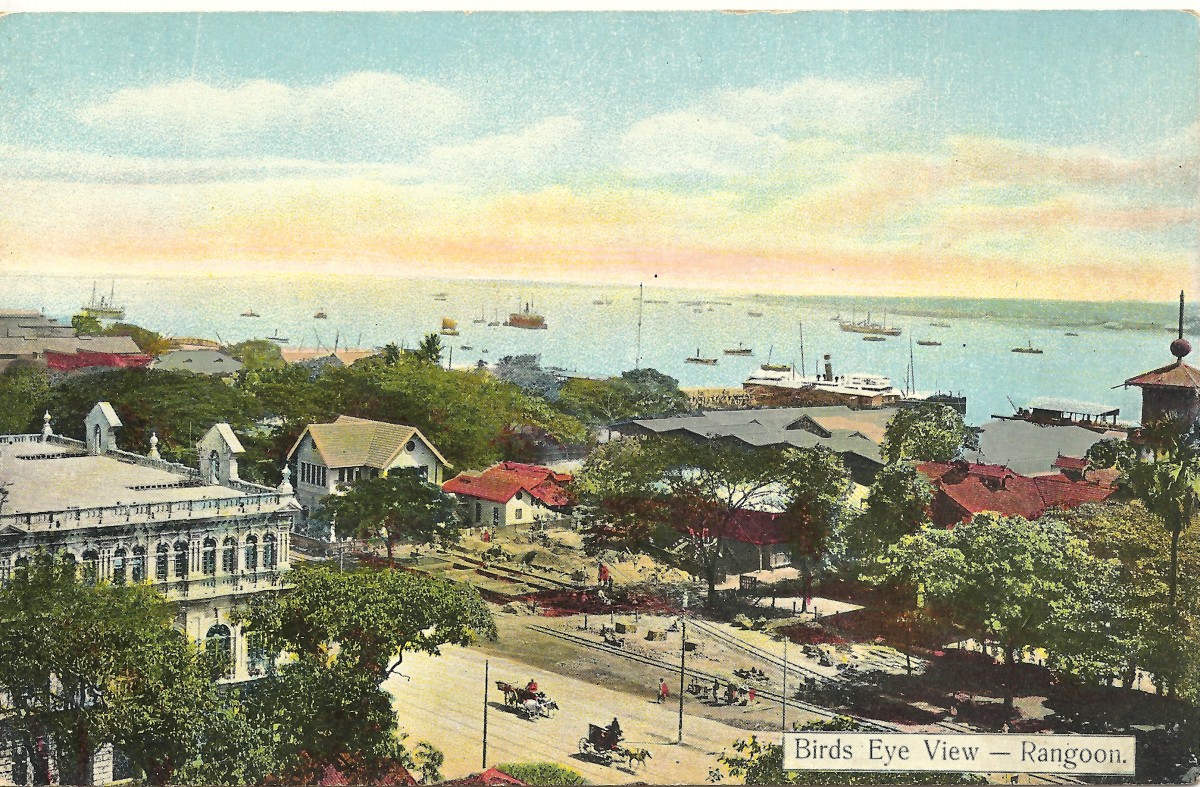
Birds Eye View Rangoon, Ahuja 115
One of the things my uncle Arthur collected, as well as second hand books about Burma, was old postcards. Apparently he had kept many postcards from Burma, and from the description of how many there were, I had guessed he supplemented the original group with purchases in London. He haunted the vintage bookshops which often have boxes of old postcards. Unfortunately, when he died, the postcards were nowhere to be found. So, a few months later I had a look at eBay to see what there was.
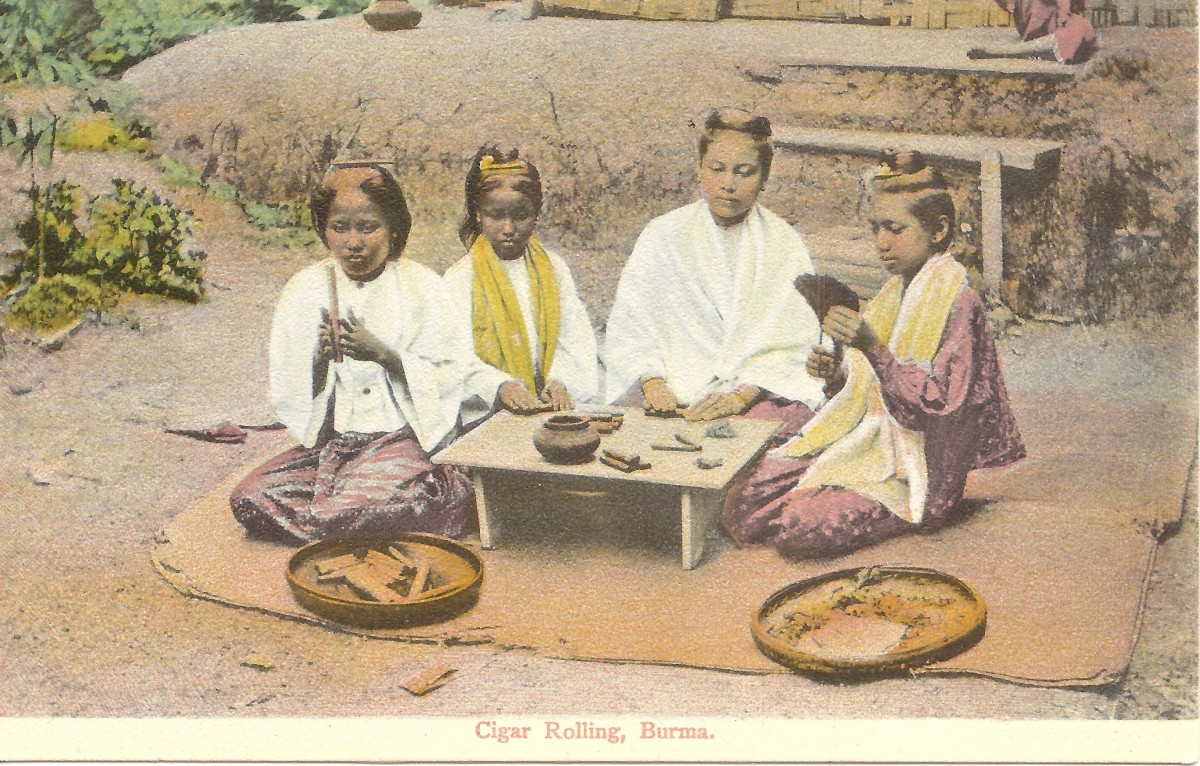
Cigar Rolling, Watts and Skeen
Wow! So many that dated back to the early 1900’s, some in black and white and some that were chromolithographed in Germany. I noticed a few names kept popping up. Famous early photographers of Burma like Philip Klier, publishing houses like the American Baptist Mission Press, and the photographer D. A. Ahuja. I liked his the best; their subject matter, the fact they were coloured (although I found some very early ones that weren’t) and, nerd that I am, the fact that they seemed to be numbered sequentially.
After buying close to a hundred over the course of a year I needed a way to catalogue them. And so, I incorporated the Burma Postcards page on the blog. You can access it from the black bar at the top of the page.
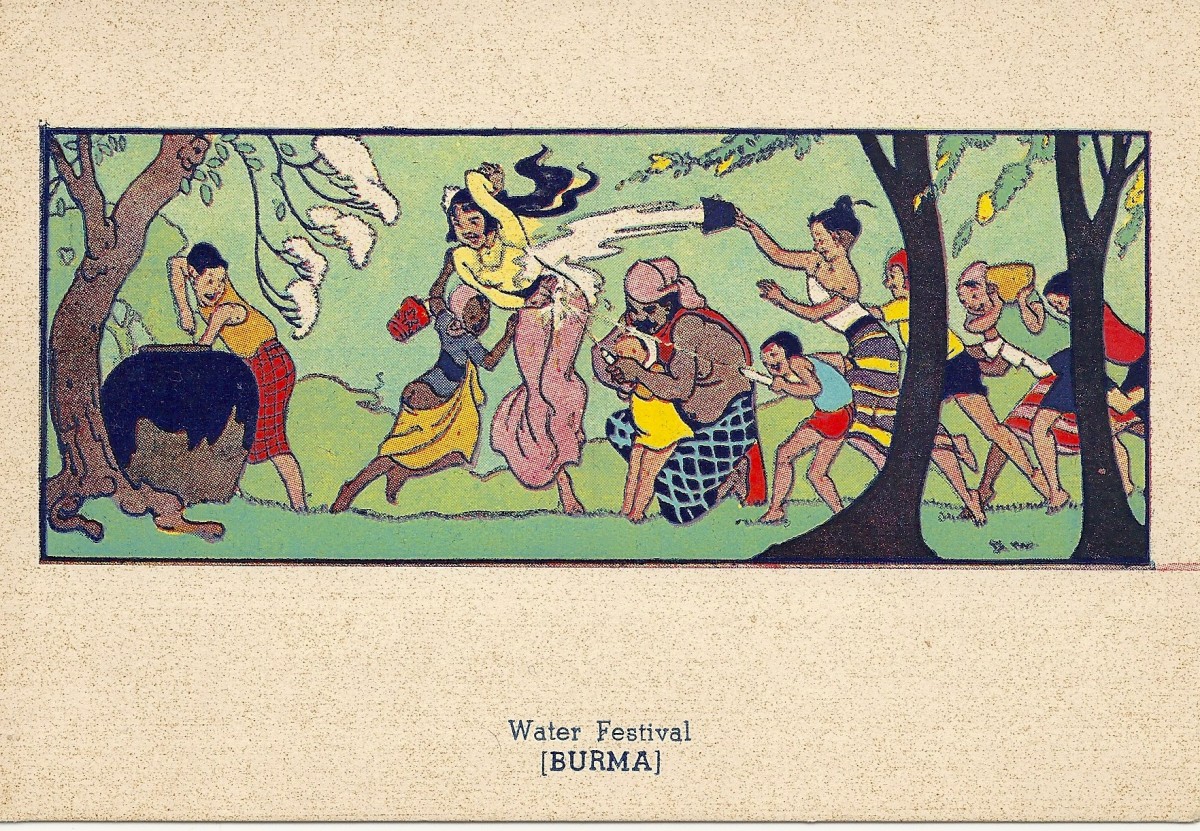
Water Festival by U Ba Kyi
I’ve divided them into rough groupings – Buildings and Scenes in Rangoon, the Shwe Dagon Pagoda, Mandalay, Other Places in Burma and People and Their Pursuits. I also saved a separate section for U Ba Kyi, some of the first postcards I ever bought, but since have seen no more. Within the groupings things are roughly sorted together – alphabetical by name for the buildings, all the pretty lady pictures together, all the elephant pics together, etc. If you click on the thumbnail to enlarge I’ve added any interesting details about the publisher, year or printer if I know it.
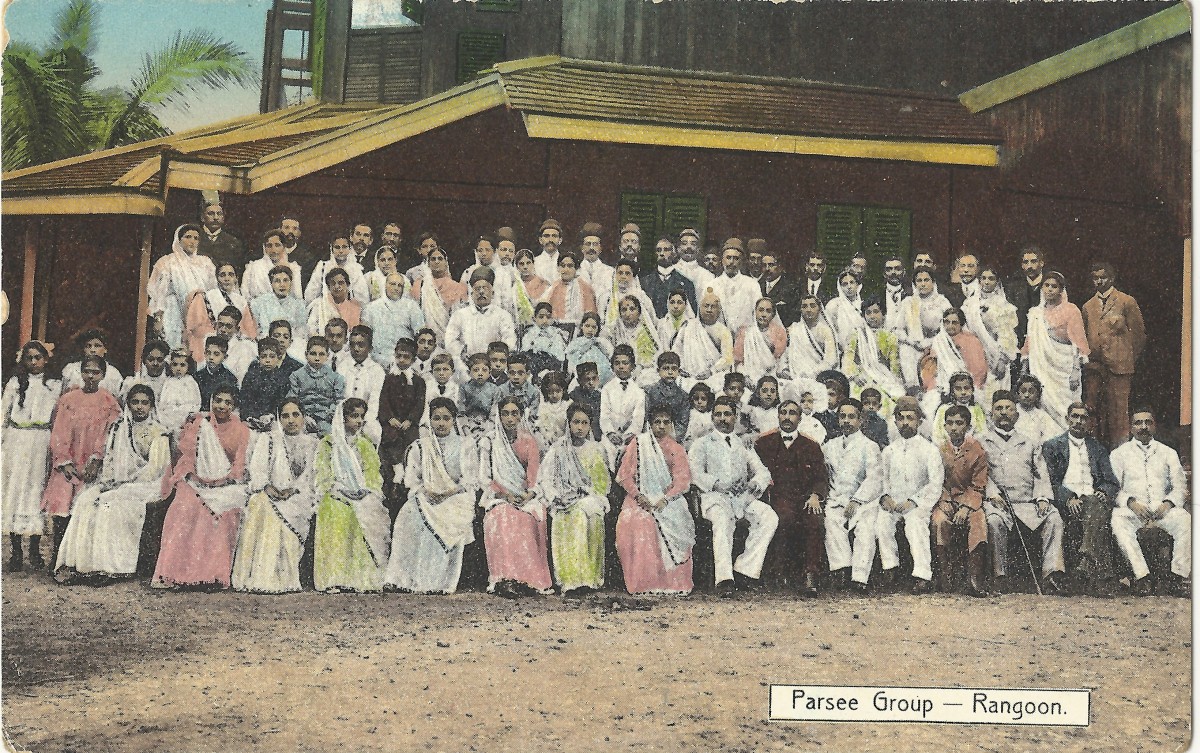
Parsee Group Rangoon Ahuja 291
I’ve also enjoyed reading the backs of cards. One man sent several postcards back to his little boy in England, explaining life in Burma. A photographer’s studio in Rangoon could develop your photos with a postcard back if you desired, so many original photos of sports teams, clubs or daily life were available. I have a series (not scanned yet) depicting the building of a rice mill that needs a whole blog post of its own. I have close to 500 cards now, and I’m still actively collecting. The Burma Postcard page shows up as the first or second entry on Google if you do a search for Burmese postcards; unfortunately more people are collecting and the prices have gone up.
I’ve received lovely messages from the page. In one, a young photographer asked to use several of the cards to include in a book he’s writing about 20th century photography in Burma, and I hope it will be released soon.
The cards enhance the understanding of what Burma, and especially Rangoon, was like when my father grew up there in the 1920’s and 1930’s. I am mesmerized by their detail and often find myself feeling as though I can step through to that lost world. Nostalgia for something I’ve never experienced.
Below are some of my favourite cards. I hope you enjoy them.
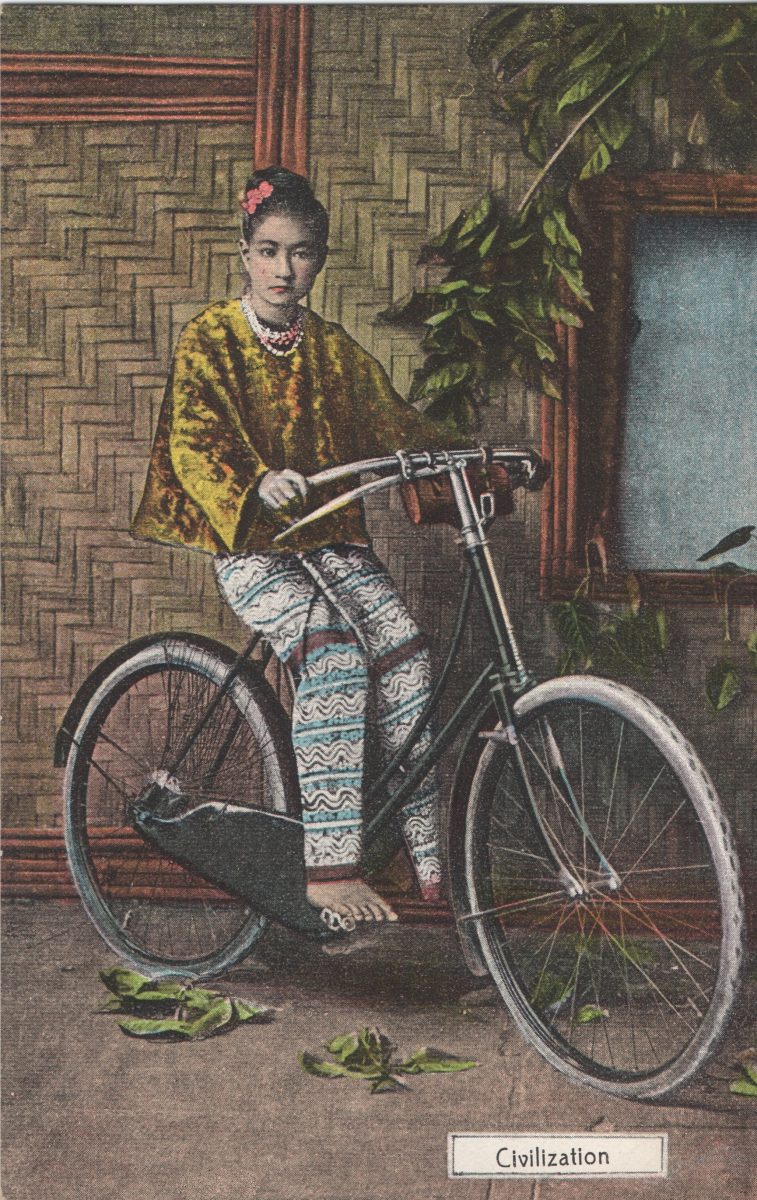
Civilization Ahuja 459
Ahuja photographed pretty Burmese ladies, or had originals by Philip Klier coloured in Germany, but this is the daftest one I’ve seen. It would be impossible to ride a bike barefoot in a longyi, and she doesn’t look too happy, does she?
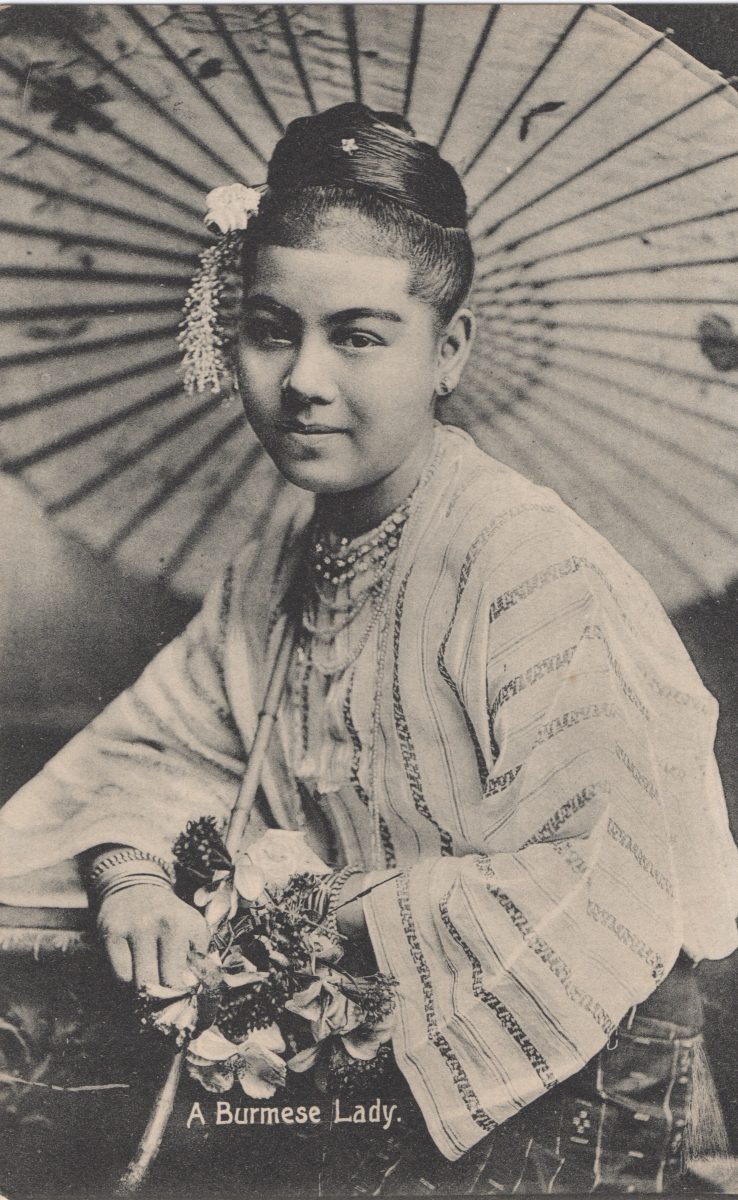
A Burmese Lady P. Klier 225
Philip Klier’s photos usually date to 1890-1900 and he catches the sweetness in this girl’s face, with her hair done up in a “sadon” and a wide sleeved blouse or “eingyi.” You can almost smell the flowers. Most Myanmar girls still wear flowers in their hair.
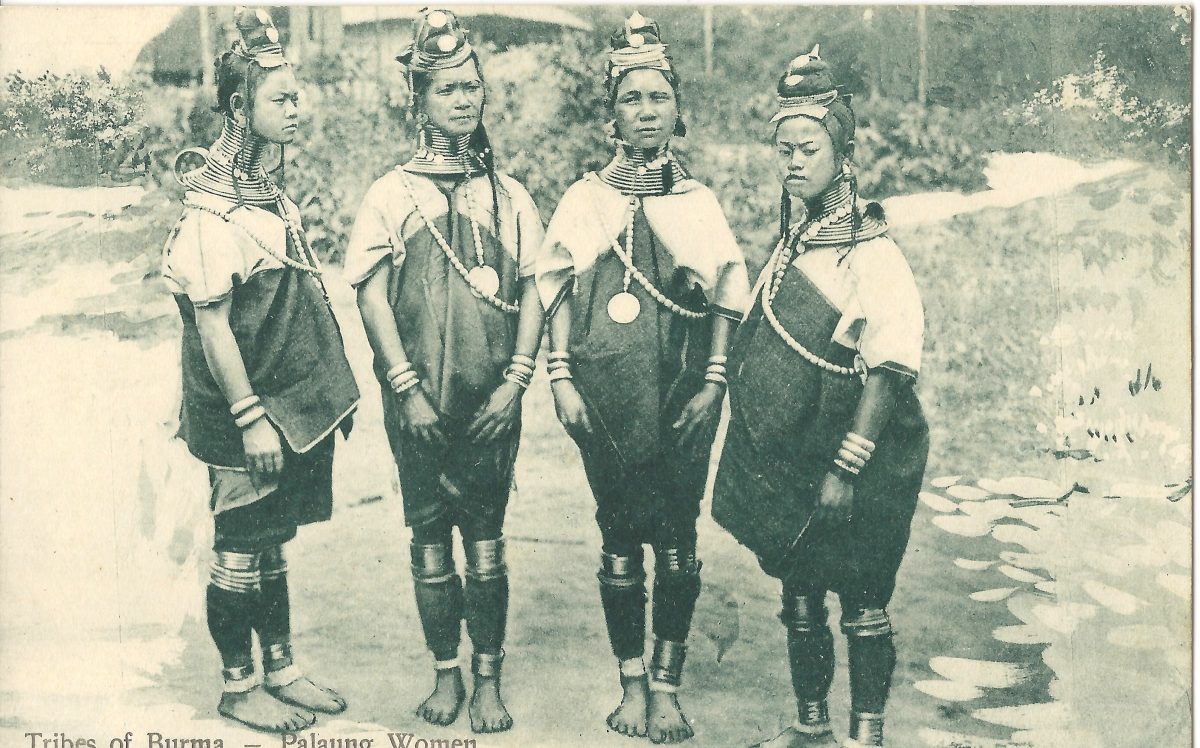
Palaung Women, ABM 41
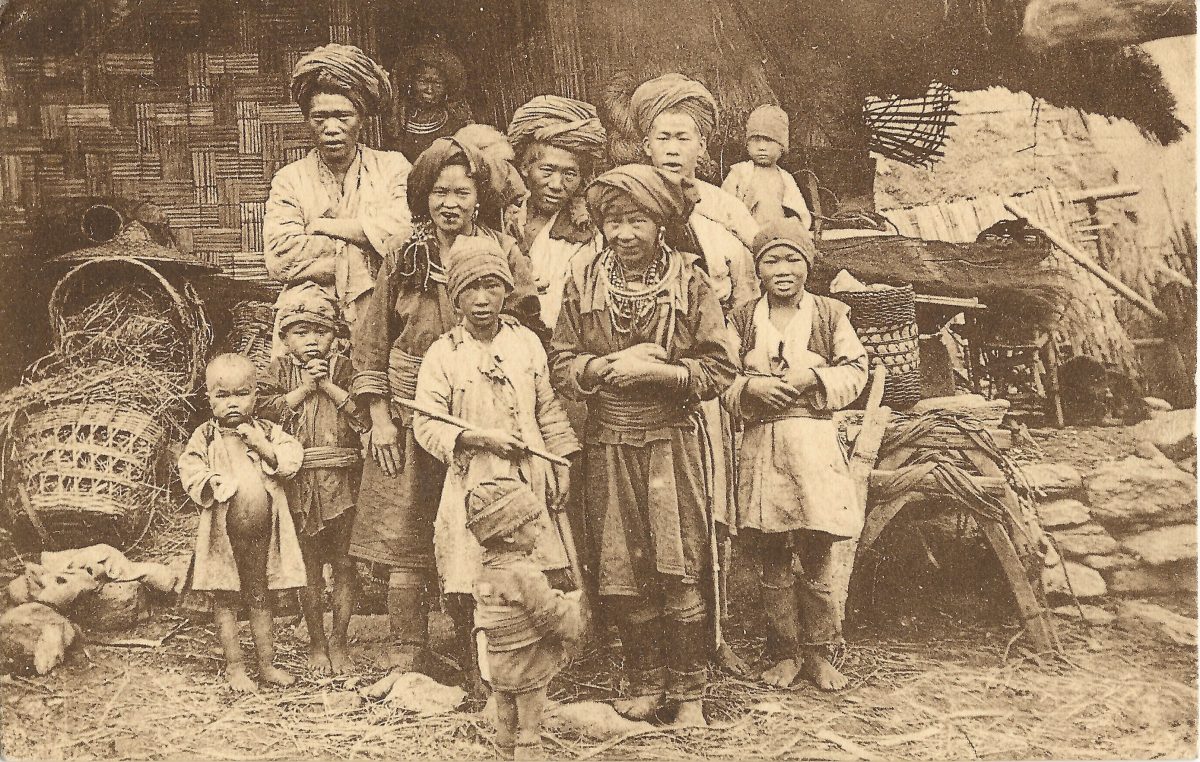
Yawyins ABM 37
The American Baptist Mission Press photographed all the ethnic tribes they encountered. Whether you believe their evangelizing was a civilizing force or pure evil, I’m glad there is some photographic record of a way of life long vanished.
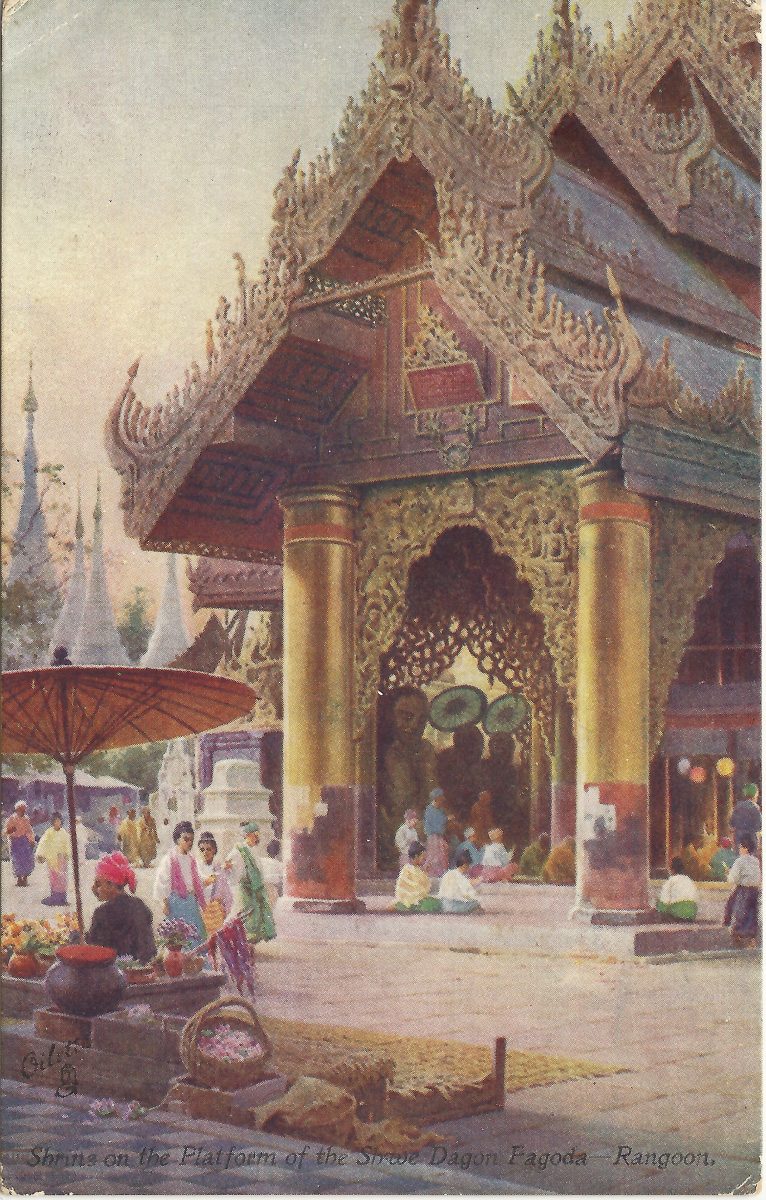
Shrine on the platform of the Shwedagon Pagoda, Tuck
Some cards were commissioned. This is one of a series by R. Talbot Kelly, published by Raphael Tuck in London. He has caught the hazy light perfectly.
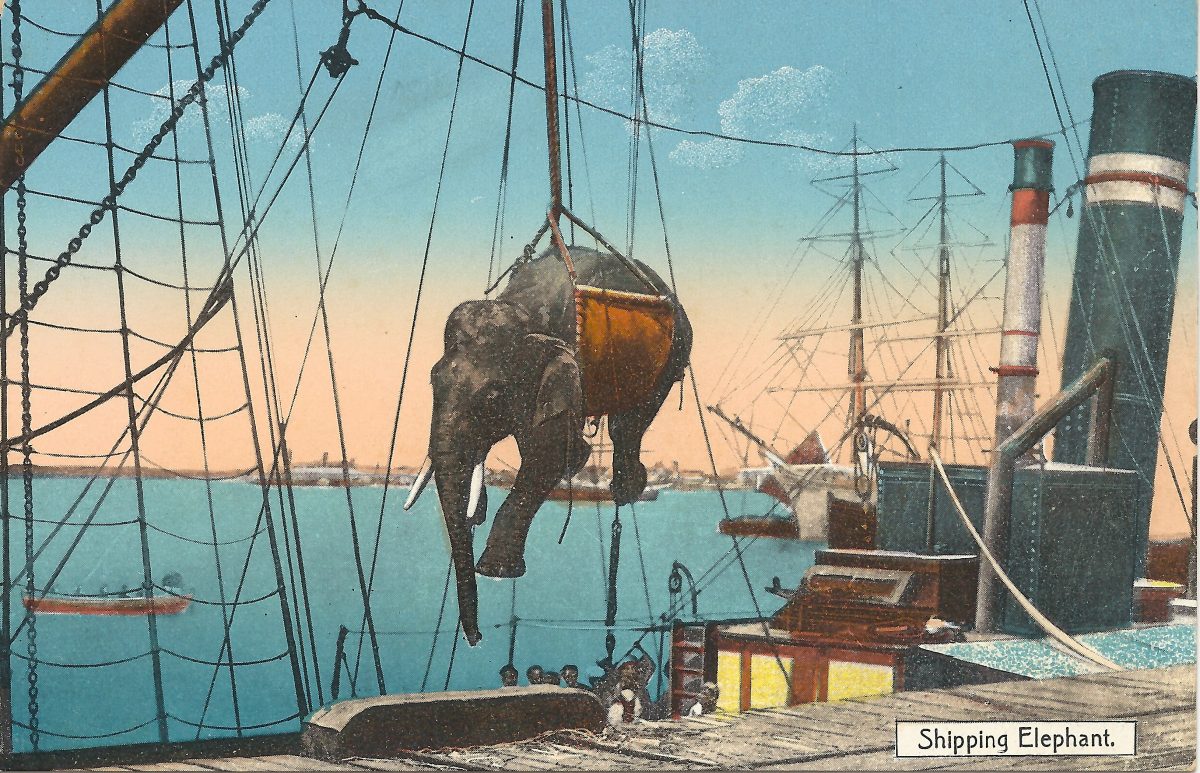
Shipping Elephant Ahuja 114
An essential piece of knowledge – how to ship an elephant.
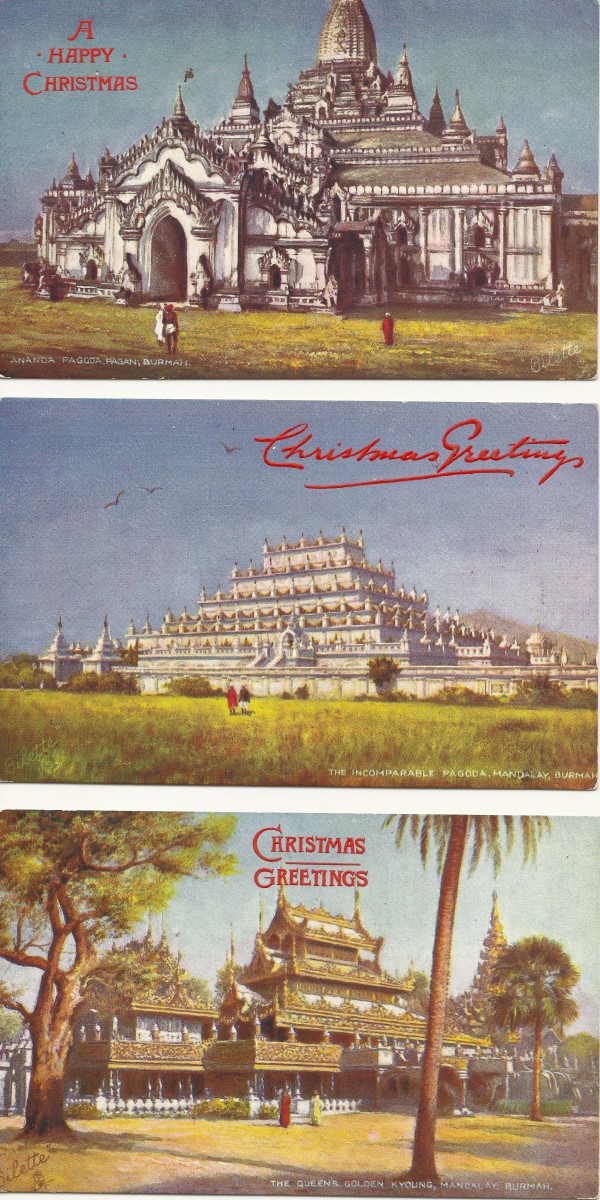
Incomparable Pagoda Christmas Tuck Oilette
What were the publishers thinking? The country’s population is Buddhist. You can’t turn around without seeing a pagoda or a monastery. But hey, we need Xmas postcards for our Burma clientele – these will do!

The collection of old postcards and photographs of Burma is wonderful and a real treasure. There is one showing the Royal Lake in Rangoon [labelled on the Chasing Chinthes website as ‘Royal Lakes & Shwe Dagon, ca 1899’], written on 2.12.99 (presumably 1899) with a letter to ‘Walter’ re the lake and the weather. Any idea who wrote this postcard and to whom it was sent (the address etc)?
I am researching (in great detail) the Tresham, Aplin and Noyce families of Burma – the relevant years for these pics would be 1880s through to 1930s or so. My maternal grandfather was a Walter F Aplin (b.1886) who was sent away to school and not brought up by his genetic parents. The name Walter wasn’t all that common in Burma at that time – you never know, it might be a connection.
Any information would be very helpful.
I don’t know who sent it as there is no signature. The address on the reverse is: H.N. Lock, Esq., 19 Haringey Park, Crouch End, London N.
Good luck in your research. Are you a member of FIBIS the Families in British India Society? They are very useful.
Not a member there but ABL and FindMyPast and any site that has BIO records, including Ancestry.com at times. From those sources I have hundreds of copies of various documents for the three families I am tracking, plus associated others.
Do you know if a photo of Matilda/Calogreedy/Antram/Noyce exists?
Thanks. Maybe some of your readers might be of assistance on reading the details above.
Jan
Yes, Find My Past is a good resource.
I haven’t researched photos, but the name Calogreedy is famous in Burma’s history. Have you read “The Lacquer Lady”? The young woman protagonist is the Calogreedy girl, and the author interviewed her in Rangoon many years after the events of 1885. Some say she was the cause of the Third Anglo-Burmese War, but perhaps she makes a convenient scapegoat. That book, and “Mandalay the Golden” describe in detail the last days of Thibaw’s reign. See details of the books and more in the booklist on Librarything at the right of this blog.
Yes – I recently obtained a copy and read it. Matilda Calogreedy/Antram/Noyce’s husband Henry Noyce was the brother of my great-grandmother’s husband William Florey Noyce. That great-grandmother was Mary Halsted, and my grandfather Walter Frank Aplin was her son by another man, an Englishman named Thomas Holmes Aplin; he was born a few years before she married into the Noyce family. I have quite a bit of information on the 4 Noyce brothers and their father Charles Noyce, and on their various offspring. Tracking down information on Mary Halsted has been difficult; both she and her two sons were all born out of wedlock so no baptism records exist – common enough in those times.
Do you have more portraits of Anglo-Burmese people in your collection that you haven’t yet posted online? I have a small one of WF Noyce but many used the studios of Phillip Klier, including my own family in the late 1890 – early 1900s.
Hi Jan, I don’t have any more of Anglo Indian families, but do keep looking on this page. I never know what might turn up.